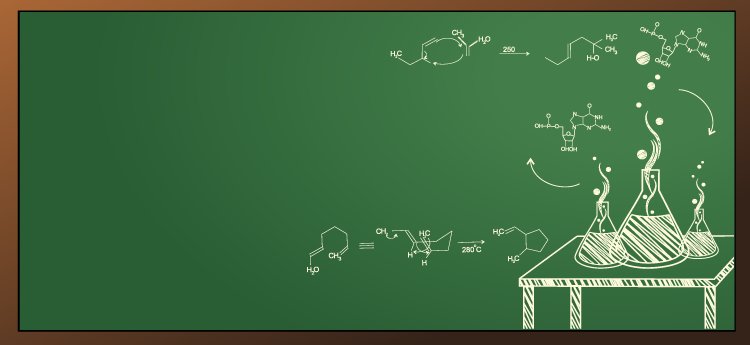Uncertain About Measurement Uncertainty?
By Lynsey McCavery and Lynsey Adams, Randox Laboratories Ltd. , 2 May 2017
As a laboratory professional you know that for every test you run there is an element of uncertainty regarding the result produced. The clinician you are running tests for must be certain that any change identified in a patient’s test results is not due to a variation with the laboratory test system. Whilst standards like ISO 15189 tell us that the laboratory has to determine uncertainty for each result, they have not outlined how it should be done. This leads to inconsistency throughout the industry regarding how each laboratory calculates their Measurement of Uncertainty. The following article aims to help create a better understanding of uncertainty within the laboratory by reviewing what measurement uncertainty is, how to measure it and factors affecting uncertainty.
What is Measurement Uncertainty?
Measurement Uncertainty relates to the margin of doubt that exists for the result of any measurement, as well as how significant the doubt is. As laboratory professionals you need to consider how big this margin is. The Measurement Good Practice Guide No. 11 states that two values are required to calculate uncertainty; the width of the margin/interval and the confidence level of each measurement. For example, a piece of string may measure 20 cm plus or minus 1 cm, at the 95% confidence level. As a result the result could be written: 20 cm ±1 cm, with a confidence of 95%. Therefore we are 95% sure that the piece of strings is between 19 cm and 21 cm long.
Sources of Uncertainty
Sources of uncertainty can be due to analytical error, according to J. Hammerling (2012) there are three phases during the analytical process when error can occur; pre-analytical, analytical and post- analytical.
Pre-analytical Errors
Your results can be affected before the patient sample reaches the laboratory. Sample collection, storage and transportation, as well as the patient’s state can all affect testing. Examples of pre-analytical error include; incorrect tests ordered, samples labelled incorrectly, in proper sample collection and incorrect sample storage. According to Hammerling (2012) this is the stage at which most errors occur.
Post-analytical Errors
This is the final stage of the analytical process. When you release your results to the clinician the interpretation of the results provided will affect how they move forward with patient care, therefore your report format and LIS/Middleware should be considered.
In order to detect and minimise these sources of error in the analytical process there should be procedures in place to govern every stage.
Analytical Errors
“The analytical phase begins when the patient specimen is prepared, and ends when the test result is interpreted and verified by the technologist in the laboratory” (Hammerling, 2012:43). Whilst the pre-analytical stage is completely out of your hands, any errors that occur at this stage will occur in the laboratory. This can be due to how the reagents are stored and prepared, the performance of your instruments, operator performance and calibration of the instruments.
Because your QC already manages all these areas of uncertainty in your laboratory’s analytical processes you can use it to calculate your measurement uncertainty
Measuring Uncertainty
Employing your QC data to calculate uncertainty makes several assumptions; your test system is under control, the patient samples are treated in the same manner as your controls and gross outliers have been removed. If you choose to use your QC data to calculate this you should ensure that you use a commutable control with a matrix similar to that of a patient sample, with analytes present at clinically relevant levels.
There are two ways to measure uncertainty
- Uncertainty estimates taken from repeated readings
- UNCERTAINTY ESTIMATES TAKEN FROM REPEATED READINGS AND OTHER INFORMATION INCLUDING PREVIOUS HISTORY OF CALIBRATION, BIAS AND SO ON
However in many instances uncertainty calculations require both measurements. AACB recommends that laboratories use at least six months of QC data when calculating uncertainty. Intra and inter assay precision, must also be considered during these calculations. Intra precision refers to precision measured within a run by running 20 or more replicates from the same sample at the same time. On the other hand intra precision is calculated using a number of different runs, running 20 or more replicates over a certain period, e.g. 20 runs in 20 days. These will help you assess random uncertainties within your system (inter) and identify systematic uncertainties in the test system (intra).
Once this data is collected you must calculate the SEM of the intra precision (A) and the SD of the inter precision (B) to measure uncertainty (u). Once A and B have been calculated they need to be squared, added together and then the square root found: u = √ A2 + B2.
As uncertainty is calculated as SD, and 1 SD is equal to 68% confidence on a standard Gaussian curve, we can conclude that if we multiply the coverage factor by 2 we can attain a 2SD confidence of 95% (formula below). This is known as expanded uncertainty (U), U = 2 x u.
Factors Affecting Uncertainty
When calculating uncertainty for your laboratory tests it is important that you consider bias. Bias must be measured and, if it is significant, removed or minimised when calculating uncertainty. If you do not remove it the uncertainty of the bias correction must be calculated and included in your overall uncertainty measurement. To calculate this we must first determine the uRef, uncertainty of the analyte value assigned to the reference material / EQA, and uRep, uncertainty of the analyte value in the reference material / EQA when measured in replicate in your laboratory. The uncertainty bias is then calculated using the following formula: uBias = √uRef2 + uRep2
You can investigate the bias of your tests by measuring them against the following:
- An assayed QC material
- Unassayed QC material alongside a peer group reporting programme
- External Quality Assessment or Proficiency Testing scheme
- Calibration or reference materials
Additional Factors
Note: When calculating combined uncertainties for analytes that are calculated using addition or subtraction, e.g. Anion gap, the SD or ‘u’ value can be used. On the other hand when calculating combined uncertainties for analytes that are calculated using division and multiplication, e.g. creatinine clearance, the SD or ‘u’ must first be converted to CV.
Conclusion
Uncertainty of a measurement refers to the doubt, which exists for the result of any measurement within the laboratory. There are a number of factors which must be considered when calculating uncertainty, including your chosen method, Bias, analytical errors and so on. If uncertainty is quantified it is no longer uncertainty but the confidence interval within which the results fall. Uncertainty should be assessed regularly and attempts made to improve the value.

































